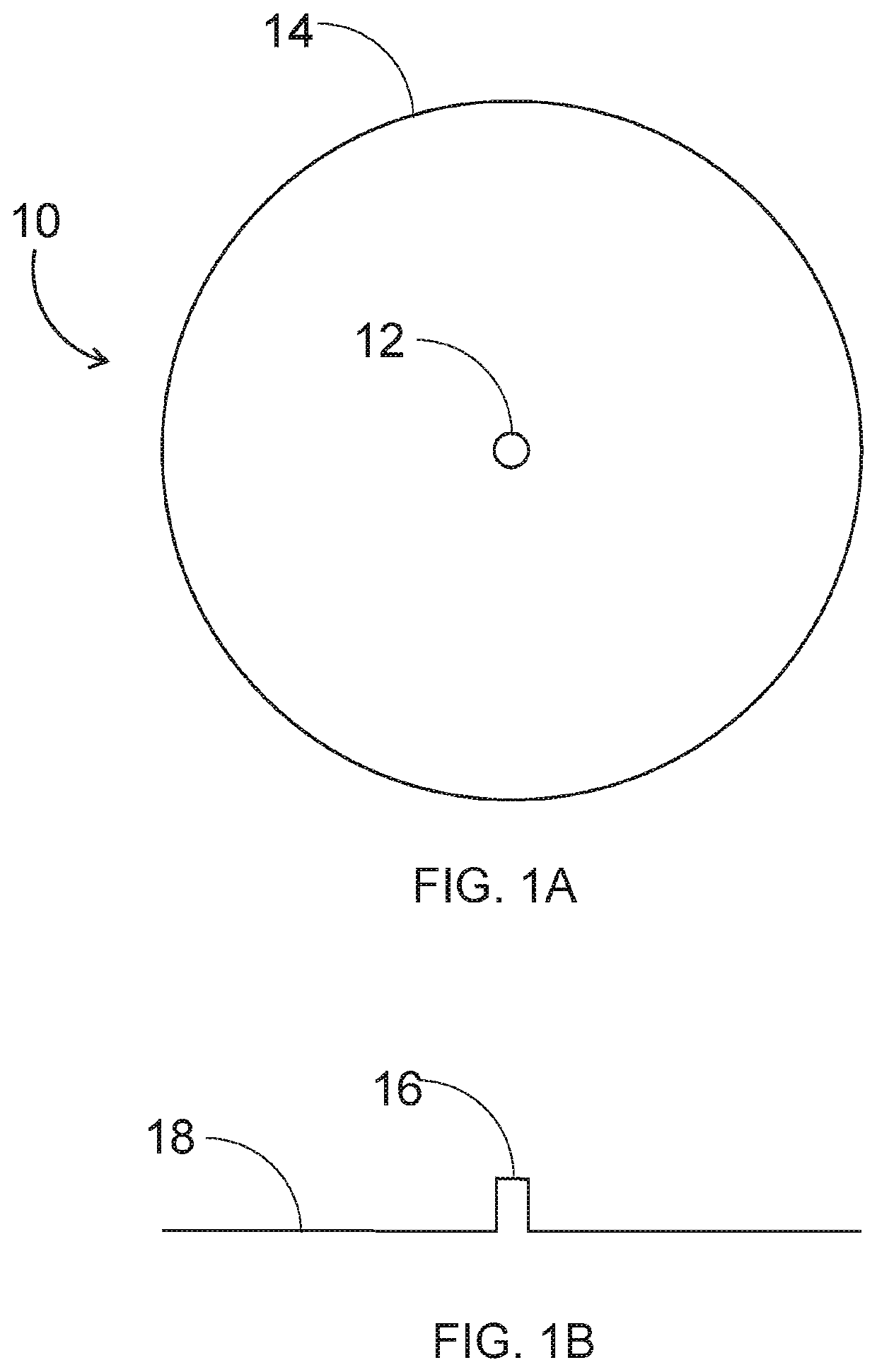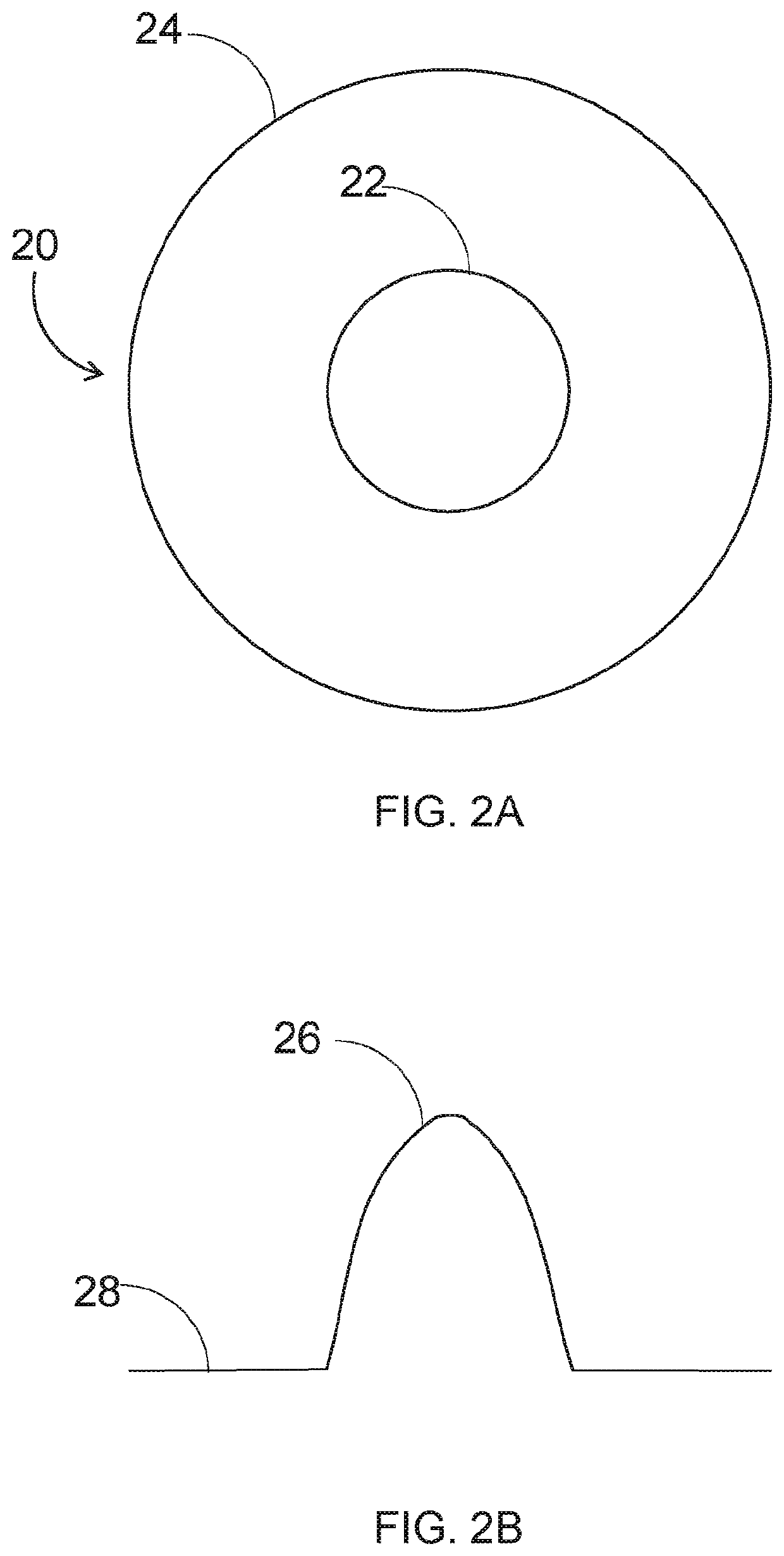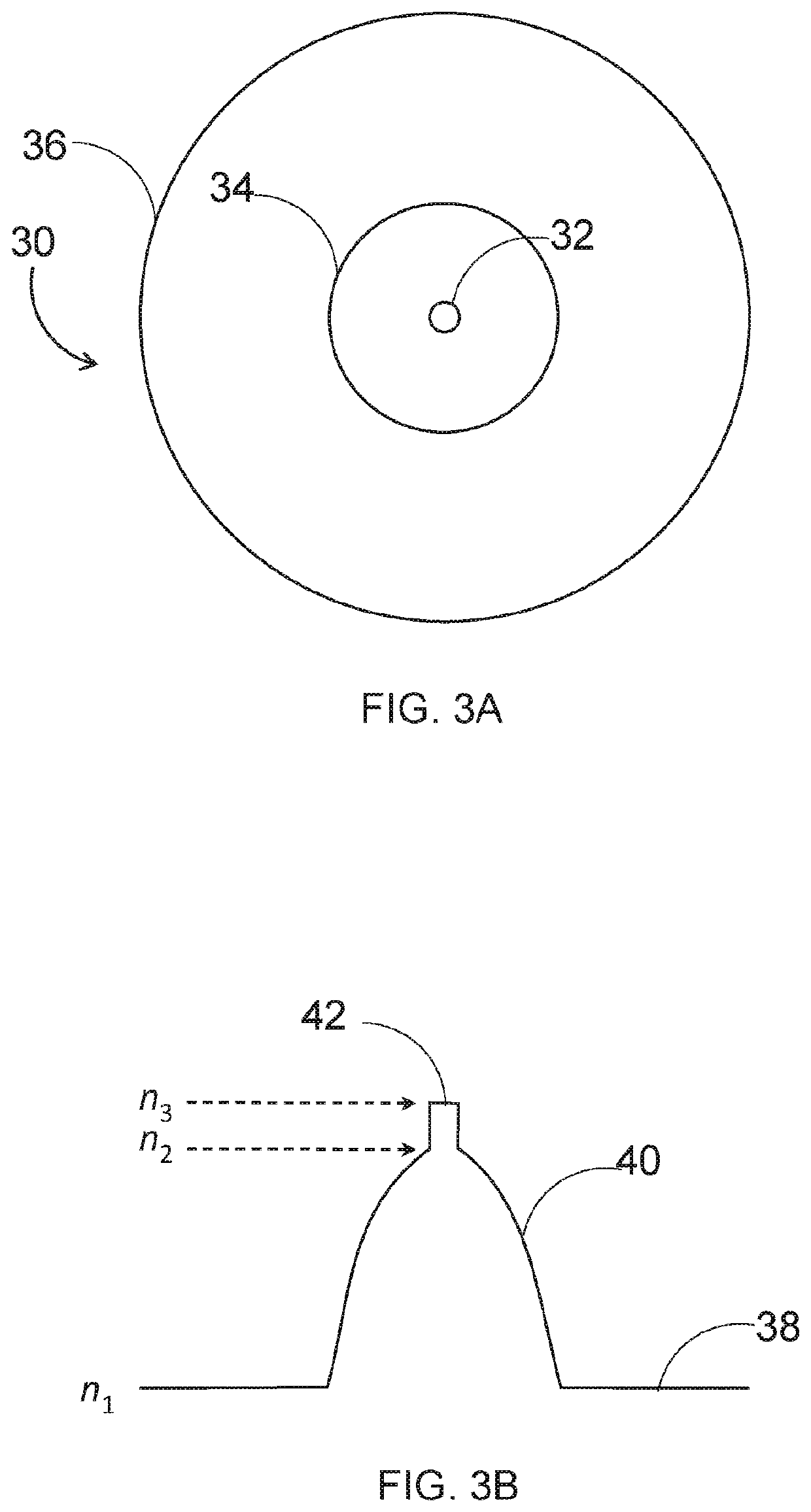Composite Single-Mode/Multimode Optical Fiber
a single-mode/multi-mode, optical fiber technology, applied in the field of optical fibers, can solve the problems of optical fiber failure, extremely limited success, and tended to fail in wells, and achieve the effects of increasing or decreasing the photosensitivity of said entities, and increasing the ease with which an optical grating is operated
- Summary
- Abstract
- Description
- Claims
- Application Information
AI Technical Summary
Benefits of technology
Problems solved by technology
Method used
Image
Examples
Embodiment Construction
[0089]Specific embodiments will now be described by way of example only, and with reference to the accompanying drawings, in which:
[0090]FIG. 1A shows a sectional view of a single mode optical fiber in accordance with currently available technology;
[0091]FIG. 1B shows a refractive index profile of the single mode fiber of FIG. 1A;
[0092]FIG. 2A shows a sectional view of a multimode optical fiber in accordance with currently available technology;
[0093]FIG. 2B shows a refractive index profile of the multimode fiber of FIG. 2A;
[0094]FIG. 3A shows a sectional view of an example embodiment of an optical fiber according to the first aspect of the present invention;
[0095]FIG. 3B shows a refractive index profile of the optical fiber of FIG. 3A;
[0096]FIG. 4A shows a sectional view of an additional example embodiment of an optical fiber according to the first aspect of the present invention;
[0097]FIG. 4B shows a refractive index profile of the optical fiber of FIG. 4A;
[0098]FIG. 5 shows a sect...
PUM
| Property | Measurement | Unit |
|---|---|---|
| diameter | aaaaa | aaaaa |
| diameter | aaaaa | aaaaa |
| temperatures | aaaaa | aaaaa |
Abstract
Description
Claims
Application Information
 Login to View More
Login to View More - R&D
- Intellectual Property
- Life Sciences
- Materials
- Tech Scout
- Unparalleled Data Quality
- Higher Quality Content
- 60% Fewer Hallucinations
Browse by: Latest US Patents, China's latest patents, Technical Efficacy Thesaurus, Application Domain, Technology Topic, Popular Technical Reports.
© 2025 PatSnap. All rights reserved.Legal|Privacy policy|Modern Slavery Act Transparency Statement|Sitemap|About US| Contact US: help@patsnap.com



